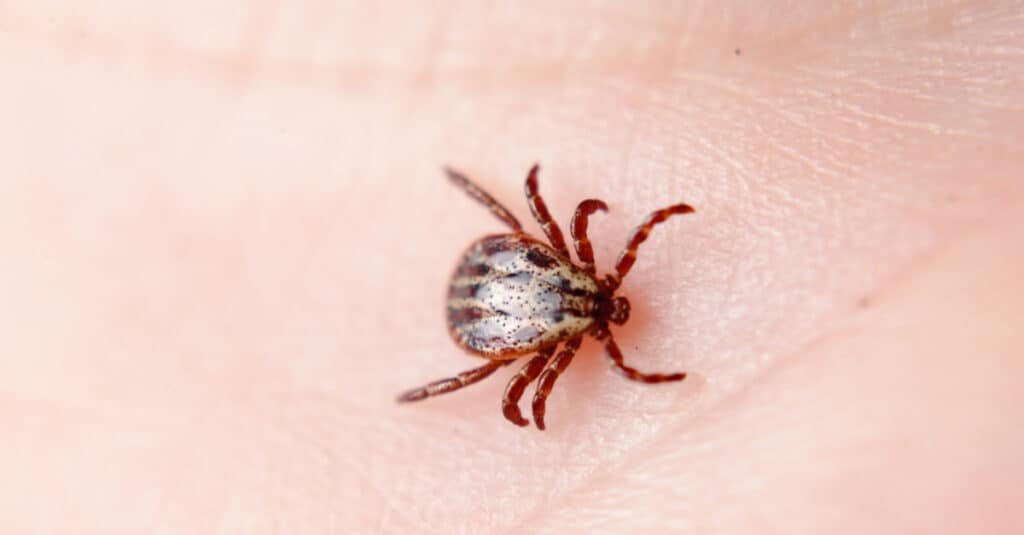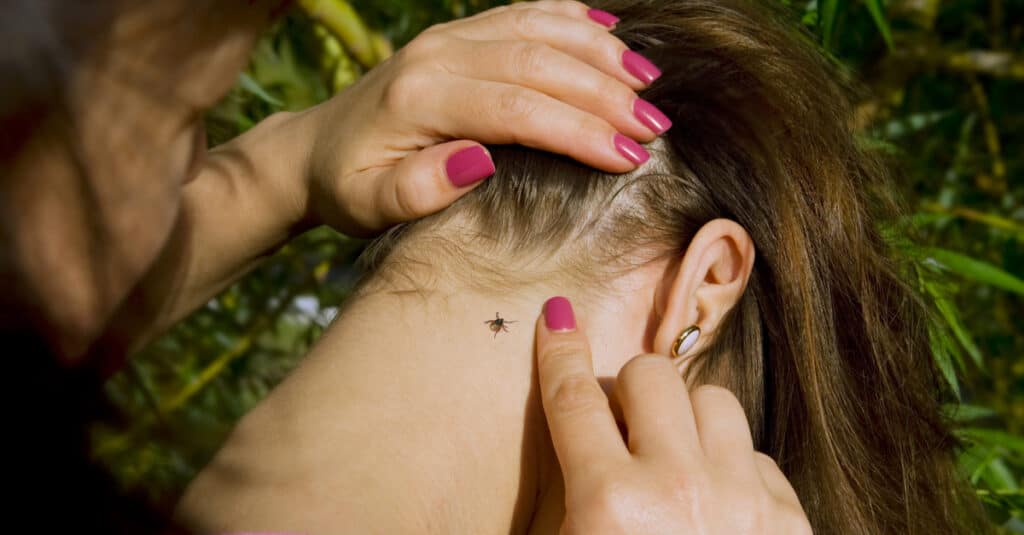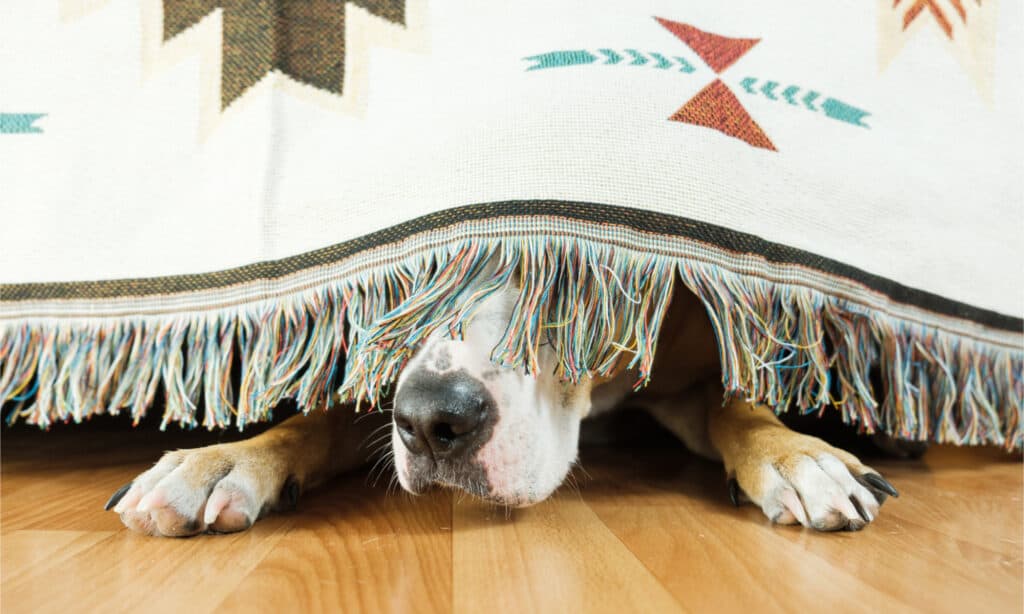Ticks are one of the most dreaded parts of the outdoors, especially when they go from the outdoors to your body! Whether you are taking a hike through the woods or just enjoying your own backyard, picking up a tick can be a nightmare. It is even worse finding one or more of these parasites on a pet or inside your home! Luckily, ticks cannot jump or fly, but they are still a pain to get rid of. Of course, preventing ticks is a lot easier than getting rid of them. But it is just as important to know how to get ticks off your body and out of your yard.
How To Get Ticks Off Your Body?
Removing a tick that is already attached must be done carefully. Ticks survive on blood and use their sharp mandibles to slice into and hold onto flesh. It is important to check your hair and body thoroughly after spending time outdoors where ticks are found. You are unlikely to feel a tick bite because ticks secrete a numbing agent during the bite.
Please note that the following home remedies for removing a tick are not recommended:
- Nail polish
- Petroleum jelly
- Using flammable materials such as gasoline
- Burning or using high heat to remove a tick
Not only are these methods considered ineffective, but they can also be even more dangerous than the tick bite! We cannot stress enough that the use of fire or dangerous chemicals like gasoline is highly discouraged. Not only is there a risk of injury, but of causing a fire in your home. Please use caution when removing a tick.
When To See Your Doctor

If you suspect that the tick you’ve removed is one of the species that carry dangerous diseases, see your doctor as soon as possible!
©Photopen/Shutterstock.com
Additionally, if you notice a rash, fever, or reddening of your skin after a tick bite, make sure to see your doctor. Some ticks can spread dangerous illnesses, such as Lyme disease or spotted fever. In the case of deer ticks, remember that the absence of the expected “bulls-eye” rash does not mean there is no risk of Lyme disease!
Most tick bites show signs of disease transmission within 24-48 hours, but it could be several weeks before you see symptoms. Inform your doctor of how long it has been since you found the tick and where you may have picked it up. If possible, a description of what the tick looked like will also help.
The CDC-Recommended Method To Remove A Tick

It is advised to use a steady upward motion to remove a tick without twisting or applying too much pressure.
©Kalcutta/Shutterstock.com
The first thing you want to know is what ticks look like. Ticks are arachnids with eight legs and a fused middle and bottom half. Remember, if it looks like a tick, treat it like a tick!
While there are many products for tick removal available, the CDC recommends the following method for removing a tick:
- Using clean, fine-tipped tweezers, grip the tick as close to your skin as possible
- Apply even pressure and pull upward in a slow, steady motion.
- Do not twist or jerk the tweezers when pulling the tick free. This can cause the head or mandibles to stay in your skin.
- If the head does become detached, use the tweezers to remove as much of the tick as possible.
- If parts of the tick’s mouth cannot be removed, leave them to heal. Your skin should push them out as part of the healing process.
- Clean the bite and your hands thoroughly with rubbing alcohol, or soap and water
- If the tick is still alive, do not crush it! Instead, put it in rubbing alcohol, place it into a sealed plastic bag or airtight container, seal the tick in layers of adhesive tape, or flush the tick down the toilet.
How To Prevent Ticks On Your Body?
The best method for preventing ticks on your body is by making sure that much of your skin is covered. Wear long-sleeved shirts, pants, or jeans, and cover your hair with a hat or cap. When you are in areas where ticks are common, like areas with heavy vegetation or overgrowth, stick to open areas if possible. When coming inside, make sure to check all clothes, pets, and gear as well as yourself. Also, taking a long shower can help wash off ticks that have not attached to you.
About Tick Repellants
You can also use commercial products containing DEET to repel ticks and other parasites on your exposed skin. Another highly recommended method to prevent ticks is using products that contain .5 percent permethrin. Permethrin can be used to coat boots, clothes, and camping gear and lasts for several cleanings. You can also buy these products already pretreated with permethrin.
It is best to avoid home remedies such as dish soap or some essential oils. The effectiveness of these methods has yet to be proven. Additionally, essential oils can cause skin damage if used in concentrations that are too high. If using a natural commercially sold product, make sure that the seller is using them safely!
How To Get Ticks Out Of Your Yard?

Keeping your yard neat and clean and your lawn trimmed helps to have a tick-free yard.
©South12th Photography/Shutterstock.com
Now that you know what to do to get a tick off your body, how do you get them out of your yard? It turns out that a lot of the methods you already use to keep your yard gorgeous also help get rid of and prevent ticks! This is also handy to repel the brown dog tick, which is the only tick that can live its entire life indoors. Remember, ticks like overgrown areas like tall grass and moist places like leaves and woodpiles. Keeping your yard neat and clean and your lawn trimmed is the first step to having a tick-free yard!
Other recommended ways to repel and remove ticks in the yard are:
- Lay down gravel or wood chips to repel ticks and wildlife that carry them.
- Use a commercial pest repellant or hire a pest control specialist to spray for you. Spray indoor-outdoor areas like mudrooms and doghouses too. There are excellent natural products available that are safe for friendly insects!
- Fence in your yard to repel wildlife that carries ticks.
- Get a monthly flea and tick treatment for your pets. These products kill ticks, nymphs, and eggs wherever your pet goes.
- Add diatomaceous earth to indoor-outdoor areas to repel ticks.
- Wash and dry clothing, bedding, and other cloth gear on high heat settings to kill ticks and eggs.
The Tick Takeaway

Ticks can cause serious health risks, and preventing them is the best way to protect yourself, your home, and your pets.
©Aleksey Boyko/Shutterstock.com
Ticks are more than a gross and disgusting inconvenience; they pose serious health risks to yourself and to your pets. While only a small fraction chooses human hosts, all ticks can cause infections. Additionally, species such as deer ticks, American dog ticks, and wood ticks spread life-threatening diseases. Deer ticks are known to spread Lyme disease, and wood ticks carry Rocky Mountain spotted fever. Additionally, there are other species that carry equally dangerous risks. The lone star tick can not only spread disease, but it can also even cause lifelong allergies. Studies have indicated that being bitten by a lone star tick may cause a dangerous allergy to some kinds of meat!
Better Safe Than Sorry When It Comes To Ticks!
Any tick found attached to your body must be removed safely. If you suspect that a tick you have removed is one of the species that carry a dangerous disease, make sure to see a doctor as soon as possible. Prevention is always preferable to removing existing ticks, but knowing what to do if you pick one up is crucial too. Taking steps ahead of time to keep your home, pets, and yourself tick-free is the best way to stay safe and healthy!
The photo featured at the top of this post is © Todorean-Gabriel/Shutterstock.com
Thank you for reading! Have some feedback for us? Contact the AZ Animals editorial team.







